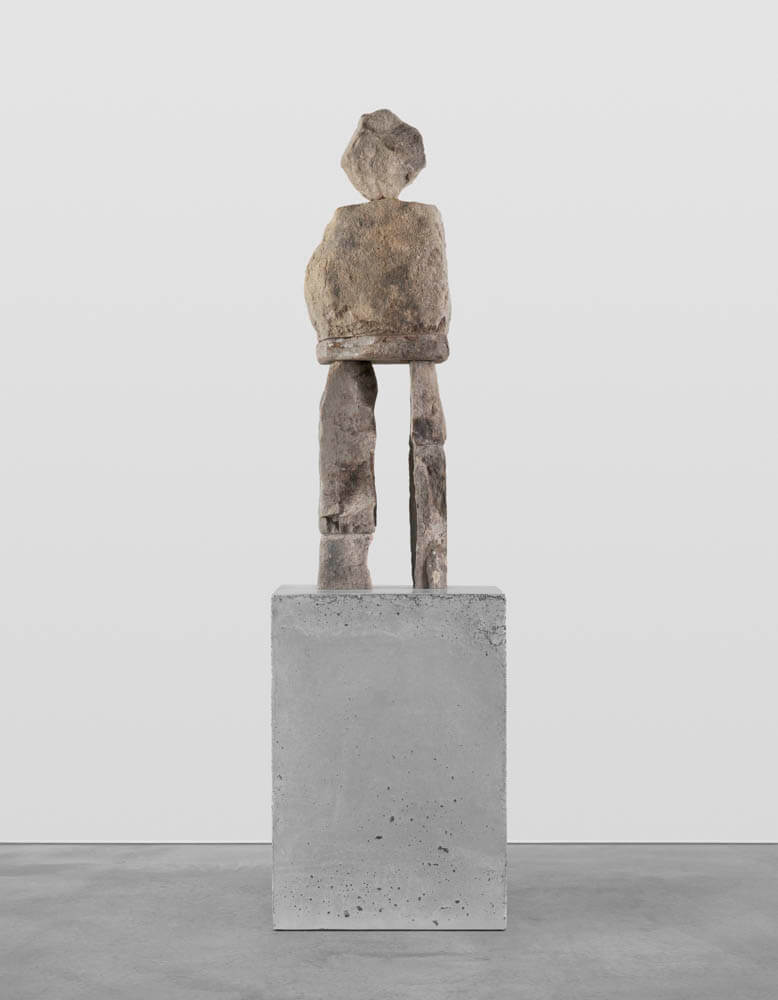
The Frisky soul is playful and energetic. Someone spirited and maybe a little mischievous.
Explore the works below. Before expanding the text, think to yourself:
What do you see?
What do you feel?
What might it be addressing?
What questions do you have?
Do you like it? Why or why not?
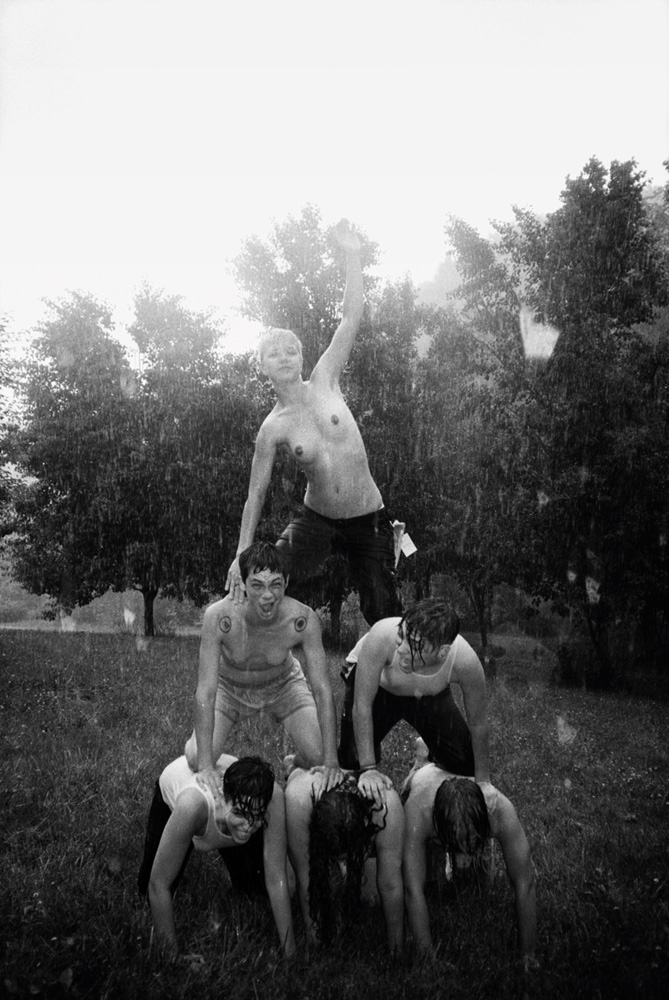
Expand to learn more
This a photograph from the series Rewilding by Cass Bird. Rewilding is a photo series taking place over two summers—2009 and 2010—in which Bird traveled to Sassafrass, Tennessee with a group of young women who didn’t align themselves with the traditional notions of gender and sexual identity. The book focuses on modern femininity in an idyllic, natural setting, contrasting the subjects’ modern androgyny alongside the seemingly undisturbed nature.
In Rewilding, Bird presents these people with a sense of femininity and youth that they were not used to presenting themselves as. However, one thing I want to note is that these people almost all present visually as white. There is an ongoing conversation around white photographers and their tendencies to present mostly white subjects, particularly around topics of liberated girlhood.
These photos present a playful and energetic side to people who, as Bird notes, were not comfortable in front of the camera. Additionally, the word frisky takes on a colloquially sexual meaning along similar lines: sexually playful. In this way, the people presented in these photos are frisky. Bird talks about one of her subjects as a ‘clone fucker’ meaning she only sleeps with people who look like her, and another as ‘beyond queer’ in that she only sleeps with gay men. To some, queerness by itself is frisky, but to Bird’s subjects, playfulness goes beyond the label of queerness.
About the artist

Cass Bird (b. 1974) is an American photographer who is best known for fashion and celebrity photography, but has many works categorized more in the “art” category of photography. She is considered one of the foremost portraitists of contemporary American photography.
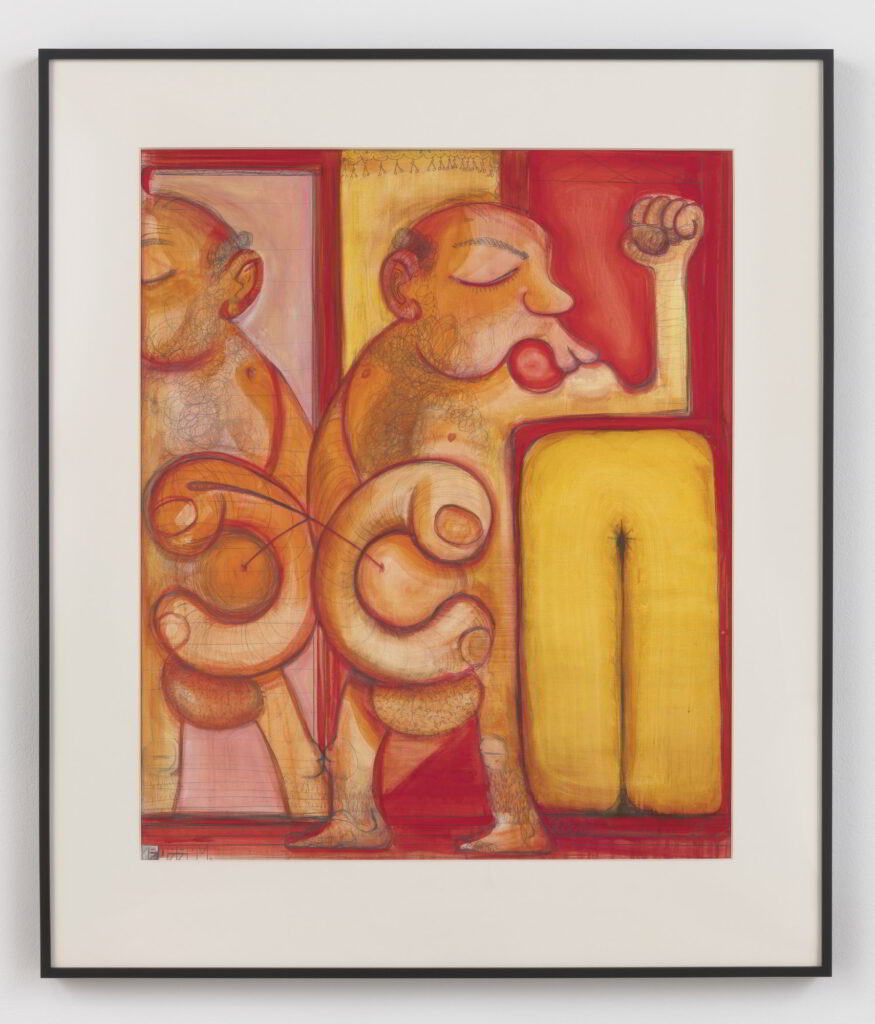
Expand to learn more
This the painting Onanist Own’n It by Nicole Eisenman. An onanist is an old-fashioned term referring to someone who masturbates, usually a man. It references Onan from the Old Testament who refused to impregnate his dead brother’s wife and instead ‘spilled his seed into the ground’. The term was historically one that referenced sexual deviants, and is not in use much today.
In this painting, we see a fragmented image of an older, balding man ejaculating to himself in the mirror. Instead of the shame that is often presented around masturbation, we can see in the painting, as well as the title, that he is “owning it”, he turns to kiss his bicep as he finishes. Eisenman presents a playful take on masturbation, presenting sexual playfulness rather than deviancy.
Could you tell what was going on in the painting before knowing the name? If not, what did you see?
About the artist
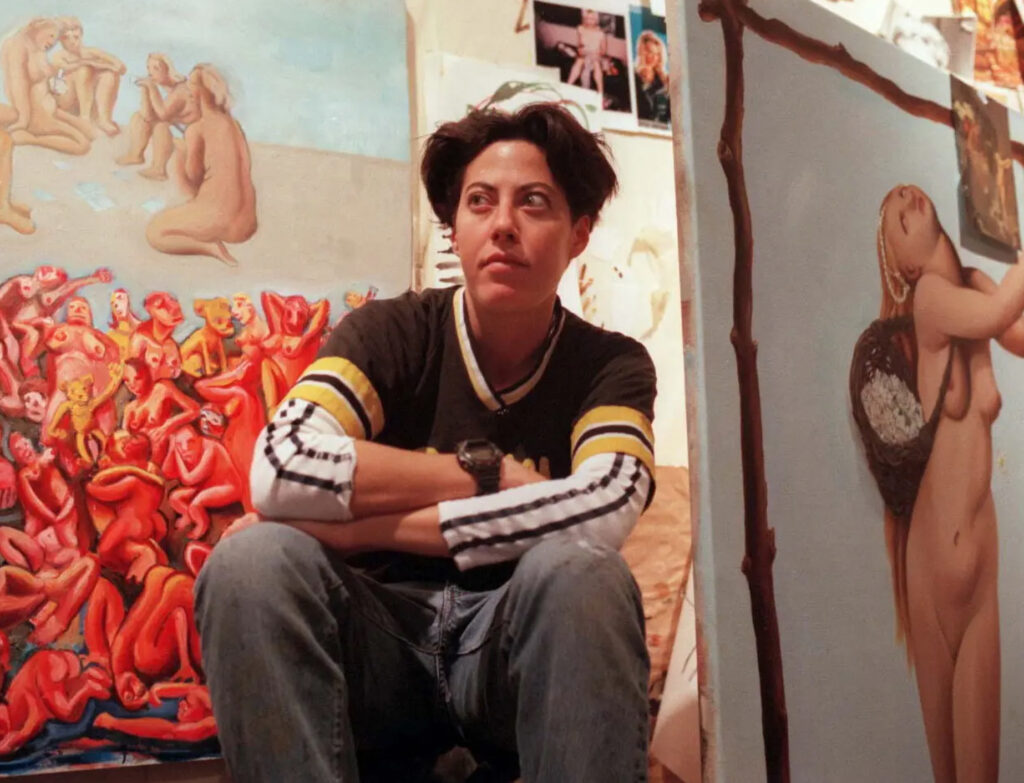
Nicole Eisenman (b. 1965) is a French-born American artist who works primarily in painting, and more recently in sculpture. She is best known for her figurative oil paintings that play with themes of sexuality, irony, and caricature. Stylistically, Eisenman draws from the social and political legacy of German expressionism, most obviously through their use of vibrant, jarring colors and shapes as well as a focus on individual emotion.
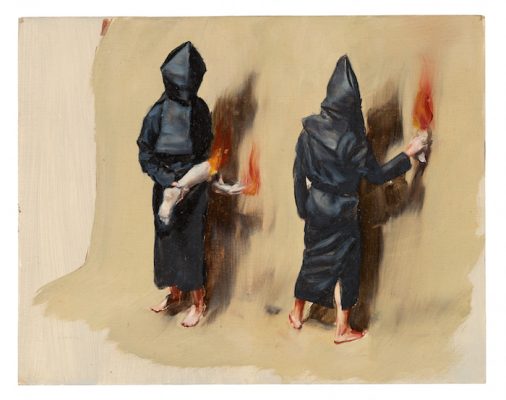
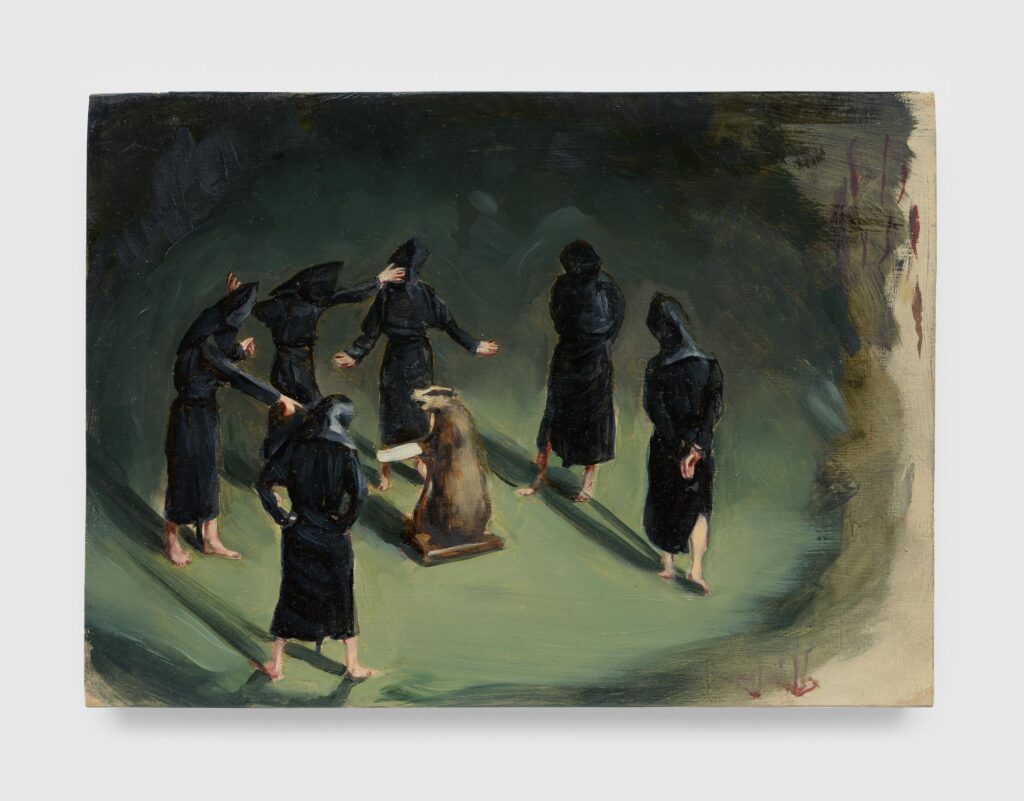
Expand to learn more
These are two paintings from Michaël Borreman’s series Black Mould. On the left is Fiery Limbs and on the right is The Badger’s Song. In the making of this series, Borremans was directly engaging with Goya, a relationship that is evident in the macabre subject and muted color palette. The series features figures covered in hooded black robes. In some, no skin is visible, but in others hands or feet poke out revealing the figure’s racial whiteness. They perform awkward, strange, or unpleasant rituals and activities, seemingly possessed. Though undefined, the aesthetics of the robes and the environment can bring viewers to think of any number of real life groups: the Klu Klux Klan is one that comes first to the mind of many Americans, even with the change of robe color. The shape of the hood also reflects the mitre hat of the pope. The color and shape are most reminiscent of the photos of prisoners tortured at Abu Ghraib, the United States torture prison. Perhaps Borremans is asking us to think of them all at the same time. As the figures perform cult like rituals in garb reminiscent of various levels of religious standards, one cannot help but question: where does religion fail us? Where does it succeed?
About the Artist
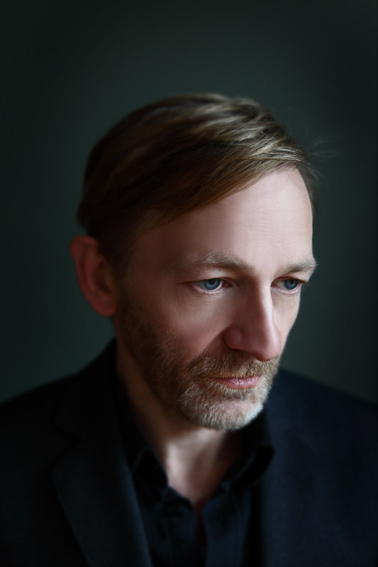
Michaël Borremans (b. 1963) is a Belgian painter whos work most closely resembles 18th century painting and the legacies of Spanish artists Goya and Velázquez. His works are all deeply uncanny, engaging with problematic legacies of racism, religious extremism, and human disturbances.